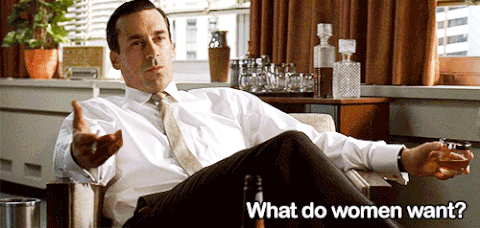
Posted on 01/03/2019 4:53:00 PM PST by EdnaMode
While Hollywood women have made incremental gains in below-the-line jobs like producing and editing, they backslid as feature film directors and continue on a path of “radical underrepresentation” in the industry, a new study says.
Martha Lauzen’s “Celluloid Ceiling,” a comprehensive report of women’s behind-the-scenes employment in film run out of San Diego State University, hit on Thursday — and its analysis comes with a blazing criticism that Hollywood’s value shift is only lip service until the industry commits to transparency.
“The study provides no evidence that the mainstream film industry has experienced the profound positive shift predicted by so many industry observers over the last year. This radical underrepresentation is unlikely to be remedied by the voluntary efforts of a few individuals or a single studio,” said Dr. Martha Lauzen, study author and executive director of the Center for the Study of Women in Television and Film at SDSU.
“Without a large-scale effort mounted by the major players – the studios, talent agencies, guilds, and associations – we are unlikely to see meaningful change. The distance from 8% to some semblance of parity is simply too vast. What is needed is a will to change, ownership of the issue – meaning the effort originates with the major players, transparency, and the setting of concrete goals. Will, ownership, transparency, and goals are the keys to moving forward,” Lauzen said.
Among the findings in a survey of employment of 3,076 individuals working on the top 250 domestic grossing films of 2018:
In 2018, women comprised 20% of all directors, writers, producers, executive producers, editors, and cinematographers working on the top 250 domestic grossing films. This represents an increase of 2 percentage points from 18% in 2017.
Last year, only 1% of films employed 10 or more women in the [the surveyed] roles. In contrast, 74% of films employed 10 or more men.
Women accounted for 8% of directors working on the top 250 films in 2018, down 3 percentage points from 11% in 2017. This is 1 percentage point below the 9% achieved in 1998.
Or, put another way in the same parameters: 92% of had no women directors, 73% had no women writers, 42% had no women exec. producers, 27% had no women producers, 74% had no women editors, and 96% had no women cinematographers.
As directors, a highly-visible change target with women like Ava DuVernay and awards hopefuls like Karyn Kusama at the front of the conversation, women fared the worst at 8% hired for the top 250 films last year. They were second only to cinematographers (only 4% of the top 250 films employed women, the same amount as in 2017).
It’s not all grim news. Women made the strongest showing as producers (26%) followed by executive producers (21%). Women composers were up 3%, sound editors up 2% and sound designers up by one from 2017.
For full findings and more information about Celluloid Ceiling, click here.
Just wait until the “dont hire women” backlash of the #metoo movement kicks in.
I think they should stop working as protest.
That will show all of us.
/sarc /not really
and they did such a good job with Star Wars.
WHO CARES????????????
You gotta lotta work to do here!! (Fire them, fire them and then fire some more...)

“Who leaves home to spend 2 hours watching women prattle on a giant screen?”
exactly ... no need to pay for THAT ... I get all of that at home for free!
If anything, women are completely OVER-represented, but not as much as blacks (12 percent of the actual population), who appear on TV and in movies As if they’re 75 percent or better of the population.
Real men like to see real men in action abd adventure films.
Real women like to see real men in action and adventure films.
Disclaimer: Opinions posted on Free Republic are those of the individual posters and do not necessarily represent the opinion of Free Republic or its management. All materials posted herein are protected by copyright law and the exemption for fair use of copyrighted works.